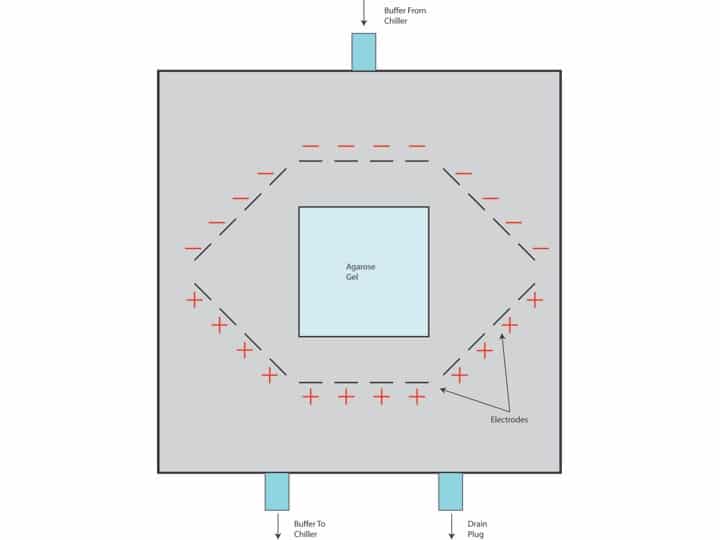There’s something in the water, and it would love to go after your experiments.
Straight out of the tap, water contains microorganisms, endotoxins, DNase and RNase, salts and other impurities that could gobble up your experiment in one bite. Of course we avoid this drama completely by using purified water from which these nasties have been removed. But how is this purification done?
Well in practice a number of techniques are used, each of which can remove a different set of impurities.
So here are the techniques:
1. Distillation. A technology as old as the hills (or at least as the stills that were hidden in the hills). Water is heated to its boiling point then condensed back to liquid. This will remove many impurities but impurities with a boiling point equal to or less than that of water will also be carried over in to the distillate.
2. Microfiltration. In this technique, pressure is used to force the water through a filter with pore sizes of 1 to 0.1 micron in order to remove particulate matter. Filter diameters lower than 0.2 micron removes bacteria – so-called cold sterilisation.
3. Ultrafiltration uses even smaller pore sizes (down to 0.003 micron). These are essentially molecular sieves, which remove molecules with a diameter larger than the pore size. It can be used to remove viruses, endotoxins, RNase and DNase
4. Reverse osmosis. If you thought that ultrafiltration used impressively small pore sizes, you’ll be even more impressed by reverse osmosis . Reverse osmosis filters have pore sizes of less than 0.001 microns, which allows them to sieve ions depending on their diameter. This is used for desalting the water.
5. Filtration through a bed of activated carbon is useful for removing things like chloride ions and organic compounds, which are adsorbed onto the surface of the carbon.
6. UV radiation. We all know what UV radiation, at specific wavelengths, can do to DNA and microorganisms. So UV is an obvious way to remove microorganisms from the water. It can also clean up the water by breaking down certain organic compounds into less harmful products.
7. Deionization/ Ion exchange. This technique removes ions from the water by passing it through a resin bed containing a mixture of cationic and anionic resins. Positive ions in the water are attracted to the anionic resin particles and negative ions are (yes, you’ve guessed it) attracted to the cationic resins. The result is that nicely deionised water comes out of the other end of the resin bed.
Commercially available water, or water purification systems will typically use a combination of these. The higher the water purity grade, the more techniques used.
Any questions or comments? Just jump in and join the discussion in the comments section below. The water’s lovely.





